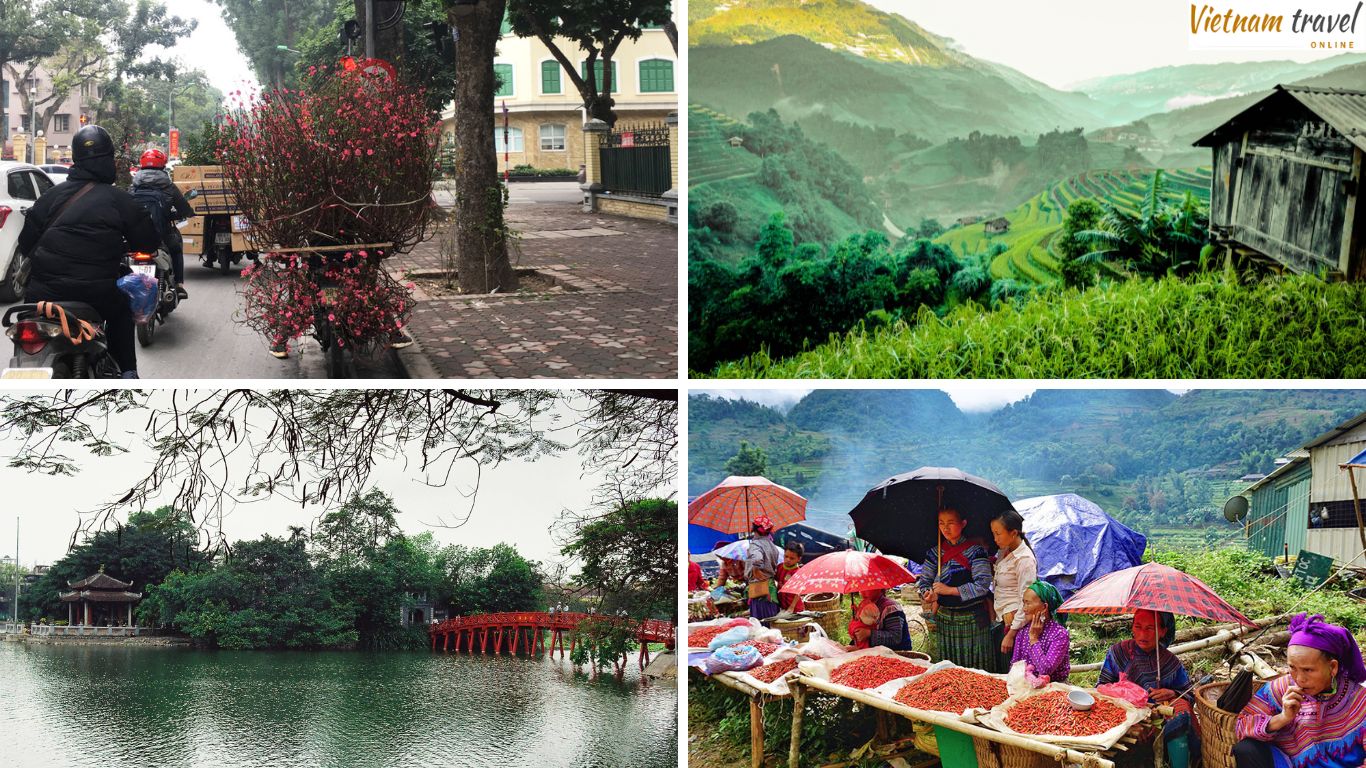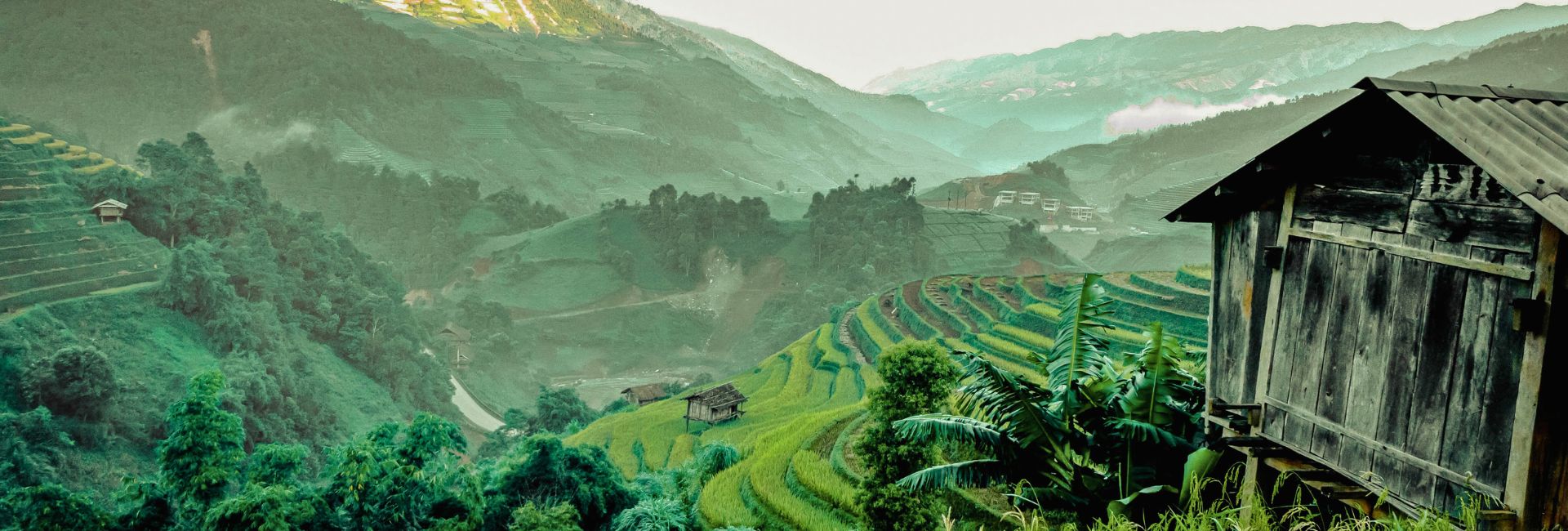Beyond the typical tropical images of Vietnam lies Sapa in February – a destination that challenges every preconceived notion about winter travel. This comprehensive guide unlocks the mysteries of this charming northern Vietnam in February, offering insider tips, cultural insights, and practical advice for an unforgettable mountain adventure.
Here is what you can expect in this travel blog:
- Sapa weather in February
- Is February a good time to visit Sapa?
- Things to do in Sapa in February
- Suggested Hanoi Sapa itinerary 5 days
- Travel tips for February
Sapa weather in February

Sapa is perched at 1,650 meters above sea level in Vietnam’s northwestern mountains. This high-altitude location creates a unique microclimate that makes February a truly distinctive month for weather enthusiasts and travelers.
February represents the peak of Sapa’s winter season. Temperatures range between 8°C to 14°C (46°F to 57°F), with a daily average around 11°C. Daytime temperatures typically hover near 15°C (59°F), but nights can dramatically drop to 5°C (41°F) or even lower.
Travelers can expect approximately 4 hours of sunshine daily. The limited sunlight contributes to the town’s cool and mysterious atmosphere, creating dramatic light conditions for photographers and nature lovers.
Rainfall averages around 80mm during February. The humidity reaches up to 82%, but the cool temperatures prevent any uncomfortable sticky feelings. Precipitation comes primarily in the form of light rain, mist, and fog.
Mornings typically start with dense, thick fog that blankets the mountains and valleys. This fog can severely limit visibility, often restricting views to just 20-30 meters.
As the day progresses, the fog often begins to clear. Sunlight might break through, revealing stunning mountain landscapes. This dramatic weather shift means you can experience multiple weather conditions in a single day.
Typical Daily Weather Progression:
- Early morning: Dense fog
- Mid-morning: Misty conditions
- Afternoon: Potential sunshine
- Evening: Cooling temperatures
- Night: Potential frost
Is February a good time to visit Sapa?
Sapa in February marks the transition between winter and spring, offering travelers a unique experience of Vietnam’s highland region. While the weather can be challenging, February presents its own special charm with cultural festivals, blooming flowers, and the potential for rare snow-covered landscapes.
Pros:
- Cultural Festivals: February typically coincides with the Lunar New Year, bringing vibrant local celebrations. You can witness traditional highland markets and experience the rich cultural practices of ethnic minority groups.
- Blooming Flowers: The early spring brings beautiful plum and cherry blossoms, creating stunning natural scenery. Peach blossom forests spread across mountain landscapes, offering photographers and nature lovers incredible visual experiences.
- Unique Landscape: The winter-to-spring transition creates a mystical atmosphere. Fog-covered mountains, potentially snow-capped peaks (especially around Fansipan), and misty valleys provide extraordinary photographic opportunities.
Cons:
- Cold Temperatures: Nighttime temperatures can drop below freezing, requiring extensive warm clothing and proper preparation.
- Limited Hiking Options: Rice terraces are inactive during this period, appearing as muddy fields. Trekking paths might be challenging and less scenic compared to other seasons.
- Reduced Visibility: Frequent fog can obstruct mountain views and limit visibility during daytime activities.
- Unpredictable Weather: Evening rain is common, and sudden weather changes can disrupt travel plans.
- Limited Agricultural Scenery: The famous green rice terraces are not yet cultivated, reducing the iconic landscape views that Sapa is known for.
Things to do in Sapa in February
February in Sapa offers travelers a unique blend of cultural experiences, natural beauty, and winter charm. Despite the cold temperatures and misty landscapes, you can enjoy a lot of things to do in Sapa that showcase the region’s rich heritage, stunning scenery, and local traditions.
Go trekking
Winter trekking in Sapa presents adventurers with a different perspective of the mountain landscape. While traditional rice terrace views might be limited, alternative routes provide opportunities to explore the region’s rugged terrain and winter scenery.
- Wear multiple warm layers and waterproof hiking gear
- Choose guided tours that adapt routes to winter conditions
- Focus on road-based trails and lower-elevation paths
- Carry proper hiking equipment and warm accessories
- Consider shorter hiking distances due to cold temperatures

Experience a local homestay
Local homestays offer an authentic glimpse into the daily life of Sapa’s ethnic minority communities. You can learn about traditional practices, share meals with local families, and gain insights into mountain culture.
Visit Sapa’s Markets
Bac Ha Market: Bac Ha Market operates on Sundays and attracts multiple ethnic groups from surrounding mountainous districts. You can purchase traditional textiles, handicrafts, and experience vibrant local trading culture.
Phong Hai Market: Phong Hai Market represents a smaller, more intimate market experience with local produce and handmade goods. The market provides authentic interactions with local community members and insights into traditional economic practices.

>>> Maybe you want to read more about Sapa’s markets: Sapa Markets – A unique cultural feature of the Vietnam ethnic minorities
Relax in Hot Springs
Hot springs offer a perfect winter retreat for travelers seeking warmth and relaxation. Several nearby facilities provide therapeutic mineral water experiences with beautiful mountain views.
Explore Sapa Villages
Ta Van Village: hosts the Giay ethnic minority and features traditional wooden stilt houses. You can explore agricultural practices and observe local community life against a backdrop of misty mountains.
Cat Cat Village: sits close to Sapa town and provides easy access to traditional H’mong culture. Tourists can watch traditional textile making, observe local crafts, and enjoy scenic mountain walkways.

Recommendations for village visits:
- Hire local guides for deeper cultural understanding
- Respect photography guidelines
- Purchase local handicrafts to support community economies
- Dress warmly and wear comfortable walking shoes
- Learn basic greetings in local languages
>>> Read this blog to find out more about Sapa’s villages!
Suggested Hanoi Sapa itinerary 5 days
This meticulously crafted 5-day journey combines the vibrant urban landscape of Hanoi with the breathtaking mountain scenery of Sapa. Travelers will experience Vietnam’s cultural richness, from bustling city streets to serene highland villages, navigating through historical sites, local markets, and stunning natural landscapes.
The itinerary balances urban exploration, cultural encounters, and mountain adventures, providing a comprehensive snapshot of northern Vietnam’s diverse experiences.

Day 1: Hanoi Arrival
Upon landing at Noi Bai International Airport, travelers will be transferred to their downtown hotel, allowing time to rest and adjust to the local time zone. The day offers an optional evening walking tour of Hanoi’s Old Quarter.
Day 2: Hanoi City Tour – Train to Lao Cai
The morning begins with a guided tour of Hanoi’s key attractions, including the iconic Ho Chi Minh Mausoleum and the historic Temple of Literature. The day transitions into an overnight train journey to Lao Cai, with comfortable sleeper cabins providing a unique travel experience through Vietnam’s landscapes.
Day 3: Lao Cai – Sapa – Cat Cat Village
After arriving in Lao Cai in the morning, travelers transfer to Sapa town, check into their hotel, and enjoy breakfast. The day’s highlight is a guided tour of Cat Cat Village, where you meet local H’mong ethnic community members and photograph traditional architecture.
Day 4: Sapa – Lao Chai – Ta Van – Lao Cai – Hanoi
The morning is dedicated to trekking through Lao Chai village and visiting Ta Van Village, offering intimate interactions with the Giay ethnic minority. A traditional lunch in the village setting provides authentic culinary experiences. The afternoon involves returning to Lao Cai and boarding an overnight train back to Hanoi.
Day 5: Hanoi Departure
The final morning allows for last-minute souvenir shopping, capturing final memories of Vietnam. Travelers are then transferred to Noi Bai International Airport for their departure, concluding their northern Vietnam expedition.
This Hanoi Sapa itinerary represents a gateway to discovering the region’s rich cultural tapestry and stunning landscapes. Our travel experts can customize every aspect of this itinerary to match your specific interests and travel preferences. Contact our travel specialists by filling out this form or emailing us at vietnam@indochinavoyages.com to start planning your personalized northern Vietnam expedition.
>>> If you want to find the best Vietnam tours with updated prices, click here!
Travel tips for February
What to pack:
- Warm, waterproof jacket
- Thick socks and waterproof boots
- Thermal underwear
- Gloves and warm hat
- Portable charger
- Extra layers
Local tips:
- Book heated hotel rooms
- Start daily activities after 9 AM
- Carry cash
- Try hot local teas
- Take warm café breaks
- Choose centrally located accommodations
Vietnam Travel Online hopes this travel blog will help you unlock the extraordinary potential of Sapa in February. This month offers a magical window to experience Sapa’s winter beauty, cultural richness, and serene landscapes. Whether you’re a photography enthusiast, cultural explorer, or nature lover, Sapa in February promises an unforgettable journey through Vietnam’s northern highlands.
Mo Nguyen – from Vietnam Travel Online






